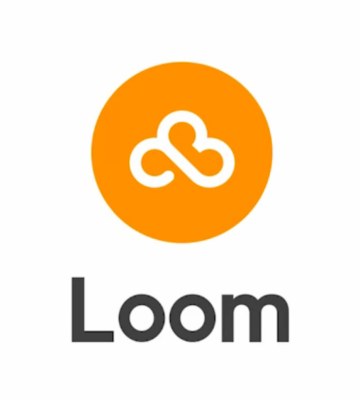A startup called Loom, which begin its life as the Y Combinator-backed photo-sharing startup Popset, is working to build a better iCloud for both consumers and developers. Currently, the company offers a cloud storage and syncing service, in the form of a mobile application for iOS and desktop app for Mac. And today, Loom is also announcing $1.4 million in seed funding to continue to build on its vision.
The round included participation from Google Ventures (MG Siegler, disclosure: previously a TechCrunch employee and current contributor); Tencent, Great Oaks VC, Overbrook Entertainment (Will Smith), Damon Way (founder, DC Shoes), and a few other angel investors.
The company first announced its follow-up to Popset in May, and then entered into beta this June. At the time, co-founder Jan Senderek explained the team had realized that they were trying to solve the wrong problem with Popset – people weren’t lacking tools for group photo-sharing, but they did need a better way to organize and manage their photo libraries. Thus, Loom was born.
The iOS application is fairly straightforward in its design, in an effort to appeal to a broader mainstream user base. After signing in, you simply start backing up photos to the cloud where you’ll receive 5 GB of free storage. A Mac app allows you to also import photos from your computer, and includes a one-click iPhoto export option. Additional storage requires a subscription, and conversion rates for Loom are now above 3 percent, Senderek tells us. However, the company is not disclosing the number of users or actives it currently has.
What makes Loom useful, however, is not just its file-syncing and online storage capabilities, but that it’s designed to serve as your mobile device’s default photo album replacement while saving you storage space on your phone. To do so, Senderek explained earlier that Loom itself stores photos in their original size on its servers, then creates multiple, smaller versions for access on mobile. Users can then clear out their iPhone’s Camera Roll, but still have access to all their photos in Loom, where they can organize them into albums, or share them with friends.
 Alongside news of the seed funding today, Loom is also announcing an iOS 7-optimized app with full RAW support for more than 130 types of RAW formats (meaning it will now store the original RAW files on its servers, to serve up the smaller versions on mobile). More importantly, it’s opening its doors to all interested users as it exits beta.
Alongside news of the seed funding today, Loom is also announcing an iOS 7-optimized app with full RAW support for more than 130 types of RAW formats (meaning it will now store the original RAW files on its servers, to serve up the smaller versions on mobile). More importantly, it’s opening its doors to all interested users as it exits beta.
In addition to building the front-end apps for consumers, the longer-term plan is to bring Loom to developers too as an alternative to the iCloud tools provided by Apple. Other things on the company’s roadmap include video streaming, improved sharing (easy album sharing to Facebook, for example), support for more imports (Aperture, Flickr, Instagram, etc.), and additional, premium plans with higher storage caps. Android support is not in the immediate future.
Beyond product development, Senderek says the eight person team is looking to add a few more engineers with the new funding, and hopes to be around ten or eleven by year-end.
“When Jan presented the idea for Loom, we realized that the idea seemed very elegant and organic, but actually there wasn’t anyone in the market doing ‘photos in the cloud,’ in a very broad sense, well yet,” says David Wallerstein from Tencent, Loom’s largest seed investor. “Loom is very focused on being the one destination in the cloud for all of your photos, across all devices, and facilitating the sharing of those photos, especially collections of photos, across the Internet. The fact that they are very focused on this particular mission, in this way, set them apart,” he adds.
Of course, Loom is not the only company doing photo sharing and sync. It will have to take on some big names, including Facebook, Google+, Yahoo’s Flickr and perhaps even up-and-comers like Amazon (with Cloud Drive) or Dropbox. It will also have to solidify its value proposition to users who may be content with the free offerings they have elsewhere, which could affect its revenue potential.
Interested users can sign up for Loom here.
